As we approach the end of March, and possibly the end of winter, we would like to take a moment to recognize the fantastic efforts of our municipal roads team, who handle clearing the snow for our town. Storm after storm, they prevail against the elements and keep our community safe, connected and ready to host our guests.
It has been a big few weeks, with more gifts from the clouds than we all might have imagined during some of the leaner moments this season. We know you likely had to actively problem-solve getting to work or the hill—and may have been frustrated.
With much of the commotion behind us, we would like to share a little perspective from the road. Please join us for a peek inside the cab of our Supervisor of Roads, Drainage and Flood Protection, Jay Audenart.
Here’s what he had to say:
Workin’ Around the Clock
Our team has staff working seven days a week. Typically, the day shift runs from 4:30 a.m. until 1:30 p.m., with eight people – plus a lead hand and a supervisor – running up to nine pieces of equipment per day. The night shift runs from 3:45 p.m. until 12:45 a.m., with two to three people on shift.
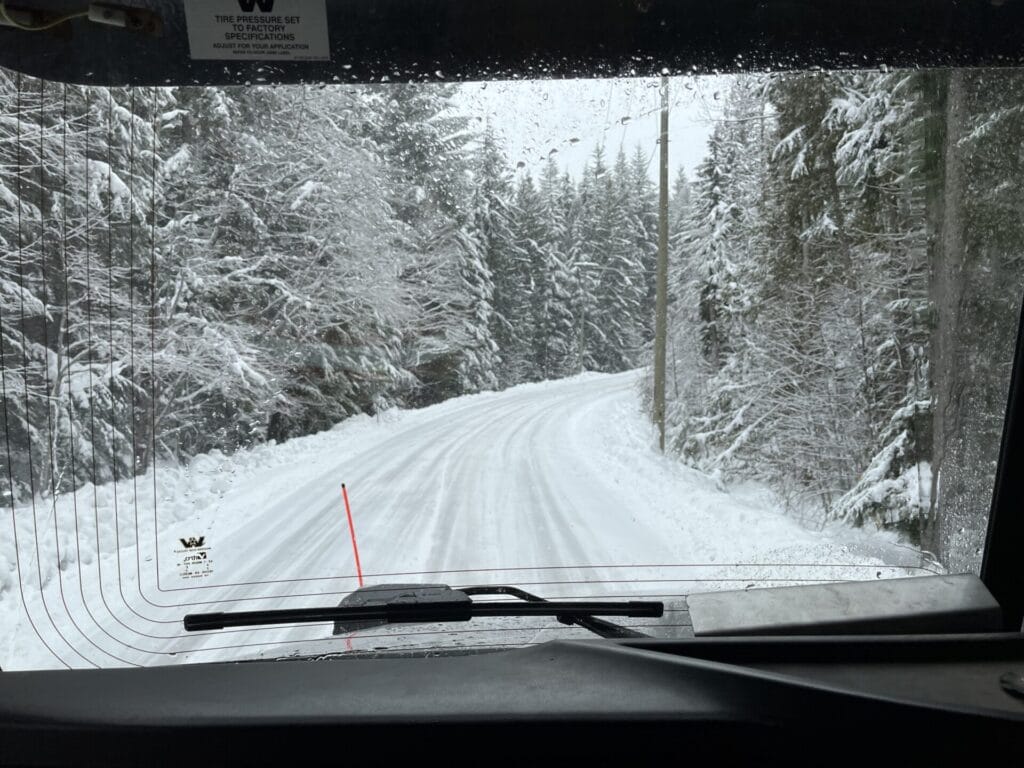
During storm events, or other roadway emergencies, there is always someone on call to provide additional support. Shifts will also work overtime until the next shift comes to work to ensure little to no gap in service levels.
Of course, adjustments are made as needed when the weather really hits hard.
It’s Personal
Every equipment operator is assigned a daily specific route. As they work, they get to know the ins and outs of each neighbourhood, including the residents. They pay great attention to detail and take pride in a job well done. Fair to say, it’s personal for them and they do truly try to do their best for residents.
Priority Routes
The Ministry of Transportation and Infrastructure is responsible for the maintenance of Highway 99, while municipal roads are maintained by the Resort Municipality of Whistler.
Clearing follows a pre-determined plan laid out in policy—which means it’s been right to the top and approved by Council.
We often get asked: “Why hasn’t my cul-de-sac been cleared yet?”
The policy includes a priority system based on years of work and data. We clear:
- Main routes, transit and school bus routes, and steep hills
- Neighbourhood artery routes
- Flat areas, cul-de-sacs and other municipal roads
During significant storm cycles, we may only maintain the Priority 1 routes until the snow eases and these routes are deemed passable. We know you have places to get to and it can be hard to wait for the plow. Please know, our team wants to get you moving as fast as possible and following the system is our best option for success.
The Right Tools for the Job
We use a variety of heavy machinery to tackle the snow, but it comes down to a few core pieces:
Five-Ton Plow Trucks
When the storm cycle hits, the army of snowplows—three to be exact—head out on their designated routes: South, Central and North. The plows are responsible for most snow removal.
We use right-hand drive Western Star Plow Trucks custom-made in Washington. The right-hand drive feature allows operators to work more precisely, minimizing property damage as they can look directly down at the curb. This is a rare feature in the snow removal industry, but we have been using this style of truck for 25 years as we feel it is essential to get the job done right.
Our current generation of trucks cost over $300,000, so buying additional plows is not a decision we take lightly. It’s a real balancing act of pieces of equipment versus number of staff versus actual snow or winter-related events. We’ve designed the routes to deliver priority service levels to the best of our ability, and we work hard to be financially accountable to our resident taxpayers as well.
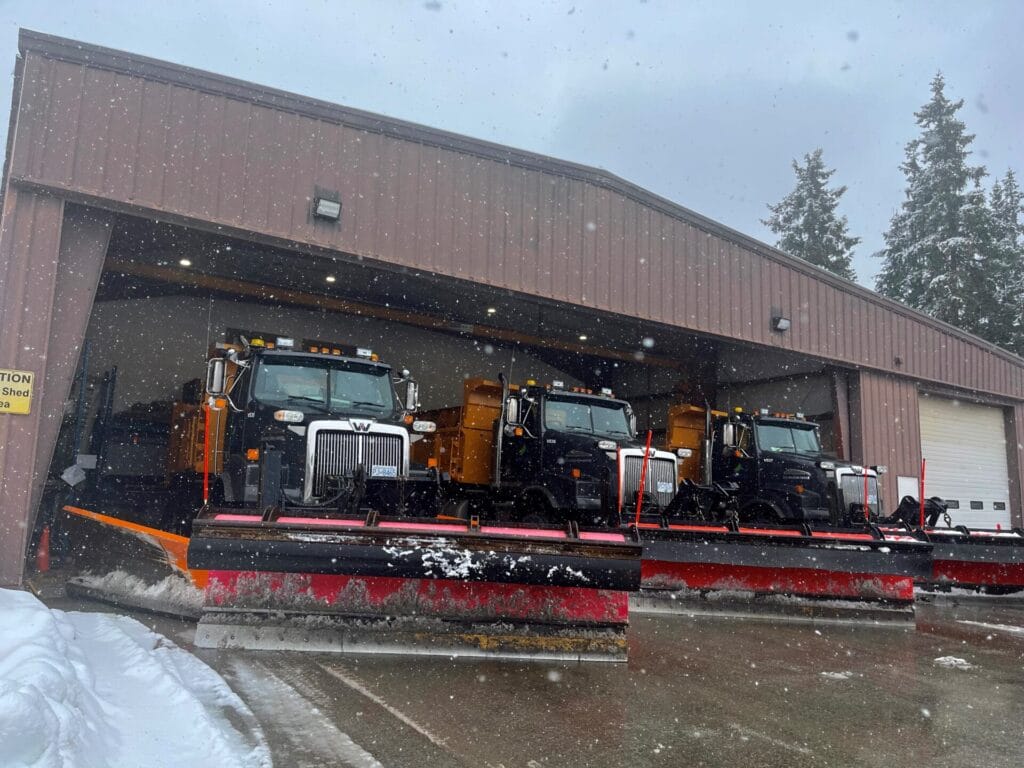
Loaders
The loaders are responsible for the detailed work, including cleaning “laybys,” or the area around bus stops, highway and street intersections, and any other areas where snow may remain from the plows. Loaders also consolidate and move piles, when the time comes.
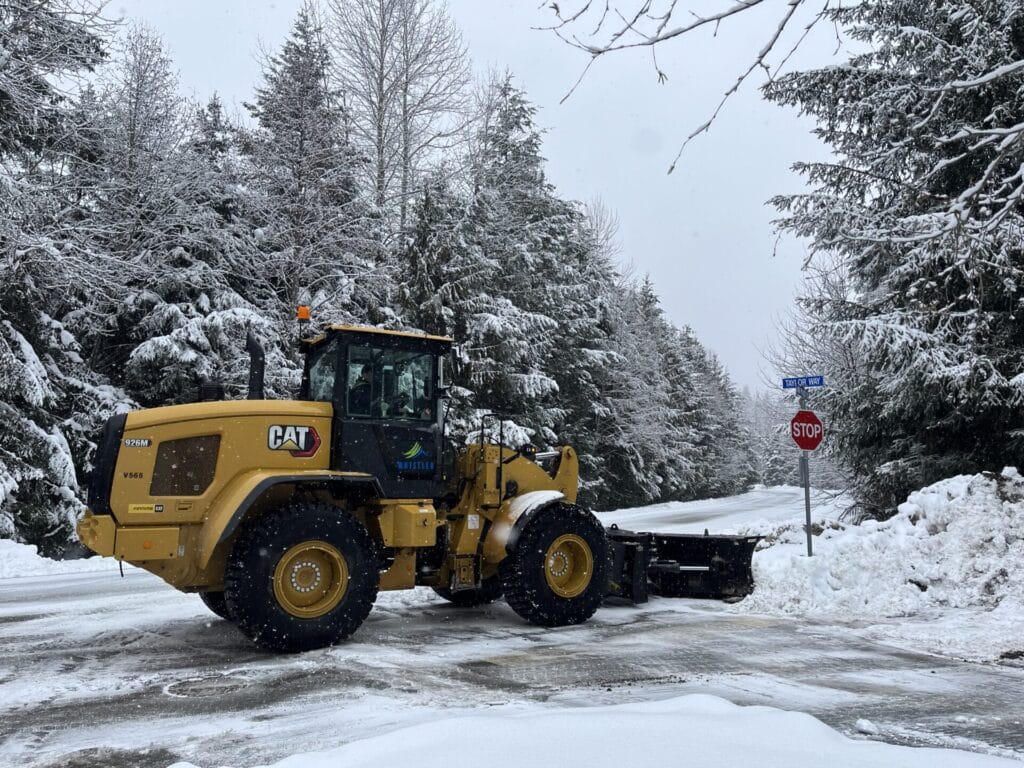
One-Ton Pickup Trucks
Chances are, if you’ve lived in this area a while, you’ve seen, driven or own a one-ton truck. This is a critical part of our operation. The trucks work like bees buzzing around the community. They handle important areas of the Village, such as the Public Safety Building parking lot where the fire and RCMP station sit, clearing parking stalls on Main Street, and putting down material for the loader after they have cleared areas of snow. The South One-Ton also goes immediately to our far-reaching southern neighbourhoods, like Cheakamus, which might not see a plow truck for a few hours in a major storm.
The One-Tons are also the trucks called when there is need for additional traction on transit routes or if a delivery truck gets stuck. Their nimble mobility ensures a speedy and prompt response.
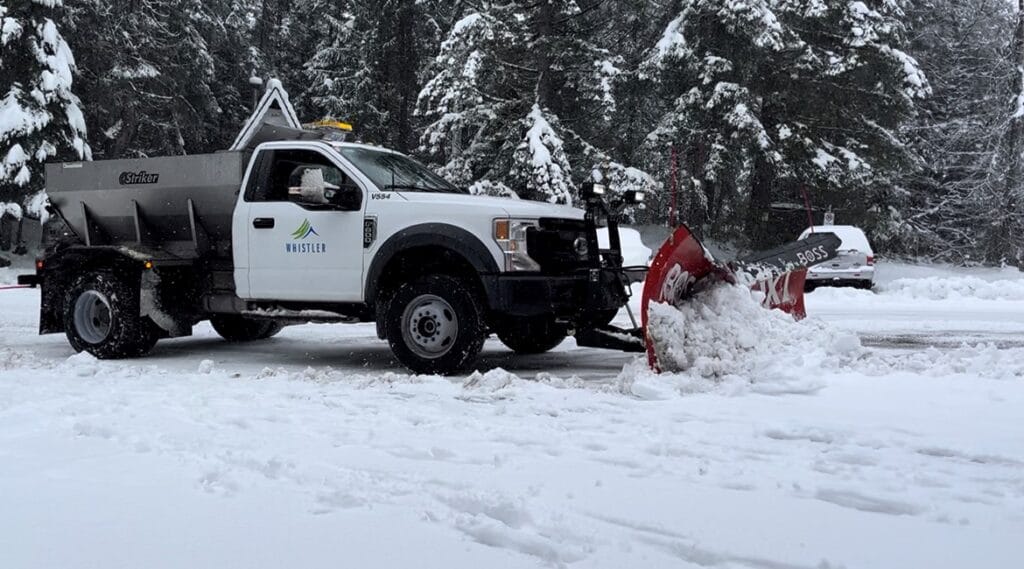
Backhoe
The backhoe supports our North Western Star Plow. It will clear highway intersections at our road right of way, the Alpine fire station parking lot, and make its way up to Emerald. It will work its way back to the Public Works Yard, clearing cul-de-sacs and detailing intersections.
Grader
Thanks to its strength and special blades, our grader is one of the best tools in our snow clearing fleet for dealing with compact snow and ice, and to move a lot of snow. When you see this unit out on a stormy day, you’ll know that it’s deep out there.
The Nitty Gritty
You may have experienced damage to your vehicle or windshield from the material used on the roads during icy conditions. The angles and large size of some aggregate or sand is to blame, and we work hard to minimize this by using the right material. Whistler lays down Bird’s Eye, which is a fine-washed pea gravel. It minimizes damage to vehicles and helps us protect our environment.
Salt is necessary to provide a safe surface in icy conditions, but it’s harmful for freshwater ecosystems, drinking water and soil. As protecting our climate and environment is also a core part of what we do, we work to balance road safety with our community’s health by being as sparing as possible with a 1:12 ratio of salt to gravel.
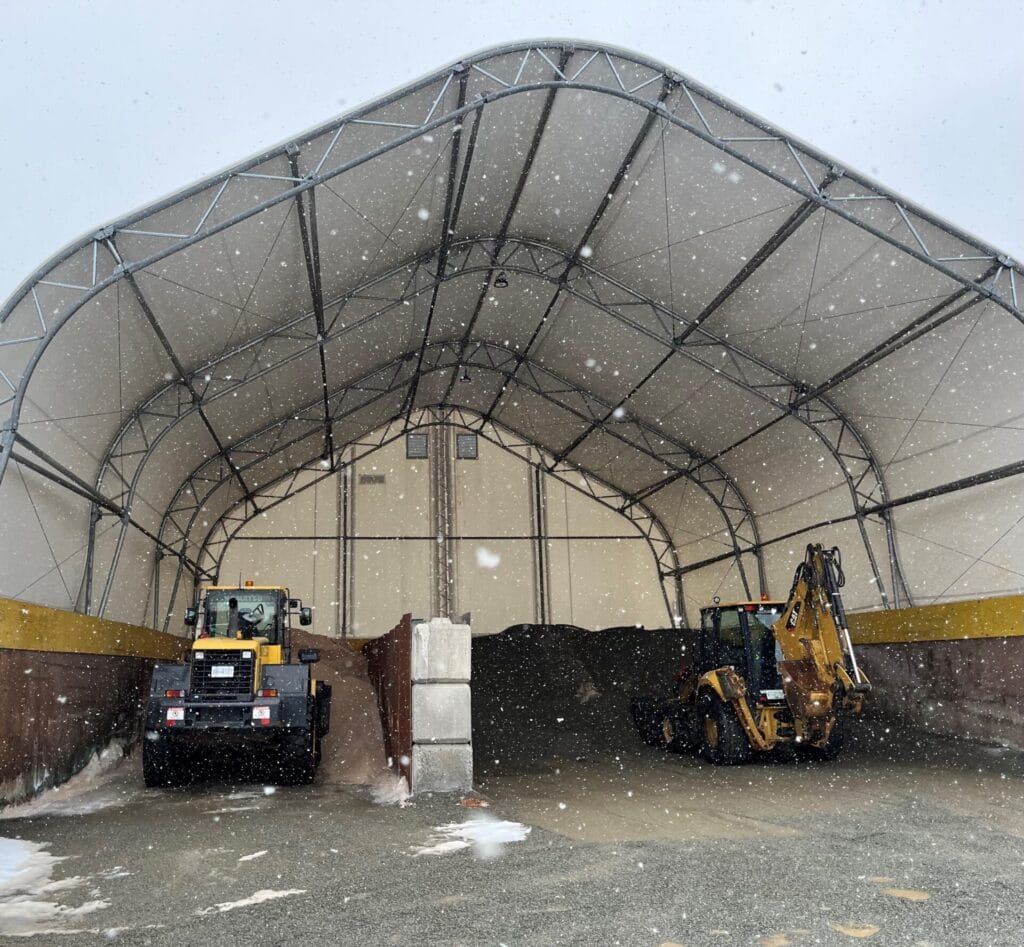
No Rest for the Wicked
Storms eventually end, then we focus on the details. We remove snow along the road’s edge, to avoid drainage issues and we haul out piles encroaching on properties or the road.
Cool feature alert: Our Western Star plow trucks double as dump trucks! After the storm, our loaders work with the plow trucks to haul snow from the Village to the Day Lot 5 snow dump.
Our asks
Alta Lake Road and the Nordic neighbourhood detour, are municipal roads and cell phone service is always strong in our town. This means they may show up as clear routes when they are packed with cars as online wayfinding tools, like Google Maps, operate off cellular networks. Please stick to the highway, if you’re trying to travel north-south, unless you are trying to access this residential area. Technology is not always foolproof.
Also, consider transit and safe walking routes on snowy mornings. We know this can be challenging, and it is not always the right fit, but we need less cars on the road. Carpooling is a great option, as is a staggered end to the day on big weekends. Traffic backups follow the ski-out patterns. Let the traffic move on and stay for some snacks, visit an art gallery, or perhaps relax at the Whistler Public Library, open to 6 p.m. daily (7 p.m. on Tuesdays and Thursdays).
And the next time a plow drives past you, be sure to give a smile or wave, or even send the roads team a thank you letter!
For other resources related to roads in Whistler, including snow and ice control information and winter driving regulations, check out our Winter blog.

